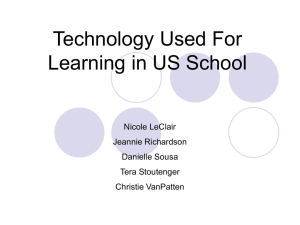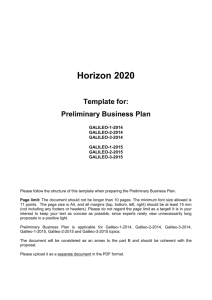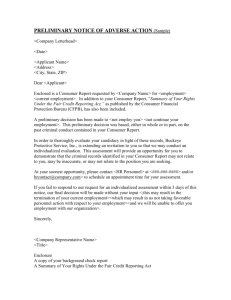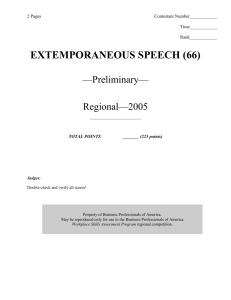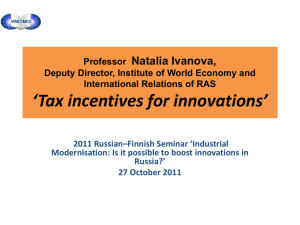How do university students expect to use their own technology for
advertisement
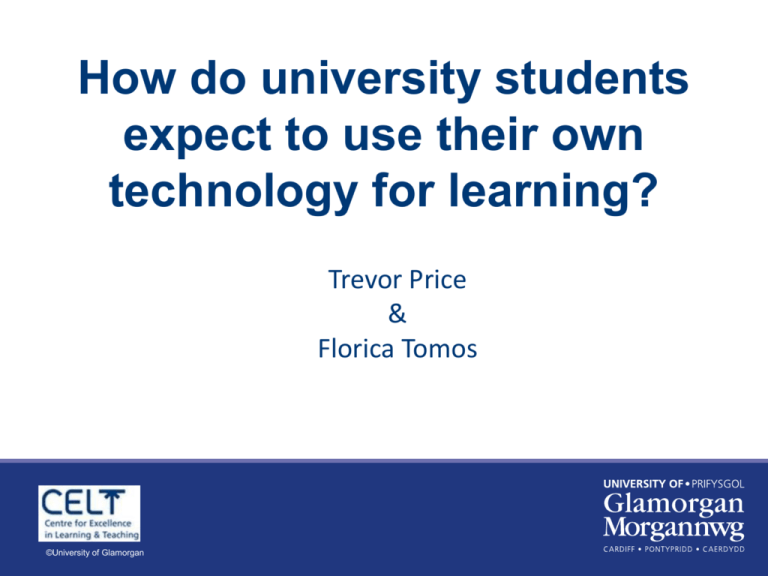
How do university students expect to use their own technology for learning? Trevor Price & Florica Tomos ©University of Glamorgan The study This paper presents the preliminary findings of a research study – Supported by HEFCW’s Learning and Teaching Strategy funding – Jan Sept., 2012 ©University of Glamorgan Aim & objectives How should students be supported with respect to their use of technology whilst studying? – Types of technologies available to students – Capabilities students have in using technologies for learning – Which technologies students use to access resources whilst studying – How current provision meets the needs of our learners Theoretical background • Prensky mentioned about the gap between ‘digital natives’ and ‘digital immigrants’ (in Ivanova and Ivanova, 2009; Prensky, 2010). • Teachers need to develop awareness of their audience and adapt teaching to suit the learning styles, meeting students’ needs (Salmon, 2000) Technology . . . • Meets students’ needs enhancing learning – – – – being more flexible convenient controllable eliminating barriers to learning and communication Hart et al. (1999); Oliver and Goerke (2008); Sheng et al. (2010); Khumbula and Kyobe (2011) Methodology • Questionnaire – March, 2012 – 161 respondents • under- and post-grad • from mixed faculties: Humanities, Business and Society, Arts & Media, Sports & Health and Science • Focus group Methodology Students asked about – types of mobile devices they used – how often they upgrade the devices – if and how they use mobile devices at university for learning – which device is most often used – if the use of their technologies enhanced learning Preliminary Results Students Own a mobile device Do not own Total Number % Number % Number Total Mobile Phones 152 94 9 6 161 100 Laptops 109 68 52 32 161 100 Preliminary Results Blackberry, Android, iPhones Mobile Phones Students who own mobile phones Nokia, Others Samsung, Sony Total Number % Number % Number % Number % 98 64 33 22 21 14 152 100 Prelim Results %age using devices at Uni No 22% Yes 78% 35 30 Device used for . . . % respondents 25 20 15 10 5 0 Audio books, e- Watching video, Games, music, books, camera entertainment shopping Blackboard Facebook, Communication, Studying, (group leisure, internet calling and completing discussion, texting friends assignments, Glamlife), Check communication timetable with lecturers Device Preliminary Results • 64% upgrade their technology every 2 yrs • mobile phone - most used (94%) device – 2nd : laptop (22% each) • 71% used mobile devices for learning – online lectures, dictionary, internet research and completing assignments Preliminary Results • 80% want to use their mobile technologies more – convenient, accessible, quick and flexible • 58% students were expected to use their mobile devices to – access learning materials, e-mails, library resources and communicate with lecturers/peers • 75% believe that mobile technology is enhancing their learning % respondents Results: expectations of use 40 35 30 25 20 15 10 5 0 Usage Conclusions • Support students – training in mobile technology use, apps, access and updates • Expand student knowledge on – – – – Security Safety Wellbeing Ethics Conclusions • Improve staff knowledge about mobile technologies and the positive impact upon curriculum design • Increase the number, and loan period, of mobile devices that can be borrowed from the university • Encourage the better use of students’ own devices, releasing centralised support References Hart, G., Ryan, Y. and Bagdon, K. 1999. Supporting organisational change: fostering a more flexible approach to course delivery. In: Squires, D., Conole, G. and Jacobs, G. eds. The Changing Face of Learning Technology. Cardiff: University of Wales Press. pp. 86-94. Ivanova, A. and Ivanova, G. 2009. Net-Generation Learning Style – a Challenge for Higher Education. International Conference on Computer Systems and Technologies. Comp SysTech’ 09. ACM. [Online]. Available at: http://scholar.Google.co.uk [Accessed: 02 February 2012]. Kumbula, C. and Kyobe, M. 2011. Investigating the Extent to which Students Share Tacit Knowledge Using Mobile Phones in Group Projects. SAICSIT’11. 3-5 October 2011. Cape Town. South Africa. MacDonald, J. (2006). Blended Learning and Online Tutoring. A Good Practice Guide. Hampshire: Gower Publishing Limited. Oliver, B. and Goerke, V. 2008. Undergraduate students’ adoption of handheld devices and Web 2.0 applications to supplement formal learning experiences: Case studies in Australia, Ethiopia and Malaysia. International Journal of Education and Development using Information and Communication Technology (UEDICT). Vol. 4, No.3, Pp. 78-87. Prensky, M. 2010. Teaching Digital Natives. California: CORWIN. A Sage Company. Salmon, G. 2000. E-Moderating. The key to teaching and learning online .London: Kogan Page Limited. Sheng, H., Siau, K. and Fui-Hoon Nah, F. 2010. Understanding the Values of Mobile Technology in Education: A Valued-Focused Thinking Approach. The DATA BASE for Advances in Information Systems. Vol.41, No.2, pp. 25-44

